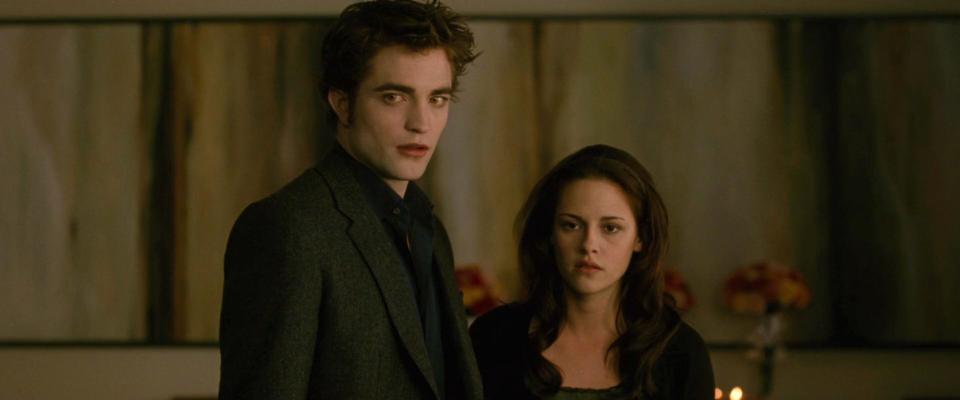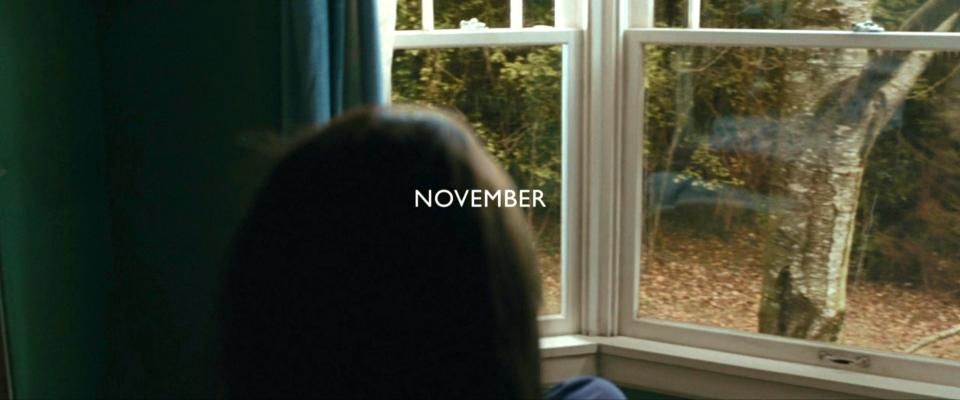A 'Twilight' movie gave us the perfect depiction of seasonal dread
- Oops!Something went wrong.Please try again later.
- Oops!Something went wrong.Please try again later.
Bella's depression scene in "New Moon" still resonates with fans, more than a decade later.
People have found humor in using the scene to express collective gloom.
Director Chris Weitz told Business Insider that he's happy the scene has become an internet joke.
Every fall, when the weather gets chillier and the sun sets earlier, one visual perfectly encapsulates our collective seasonal dread: Bella Swan sitting in a chair, staring blankly out her bedroom window as months pass her by.
It's one of the most poignant moments of Chris Weitz's "New Moon," the warmer-toned, slower-paced 2009 sequel to "Twilight."
In a franchise replete with supernatural creatures and fantastical elements, Kristen Stewart's raw, human depiction of Bella's depression made fans feel seen in an era when it was still taboo to speak openly about mental illness.
"It hurt my heart how relatable her sadness and emptiness was," one fan wrote in the subreddit r/twilight in a post about revisiting both the books and the film series. The comments are filled with fans sharing their own stories of how the scene affected them. "I went through a period of depression and re-watched the Twilight series at one point and never resonated with anything more than that New Moon scene," wrote another.
In the 15 years since "New Moon" premiered in theaters, the scene has taken on a life of its own on the internet. Immediately when the calendar reaches October 1, users on TikTok and X (formerly known as Twitter) commemorate "Bella Swan depression awareness month," turning the scene's legacy from heartbreaking to heartbreakingly funny. When fans sought comfort in the nostalgia of the "Twilight" franchise while stuck indoors during the pandemic, the image of Bella in her bedroom, unmoving as the months passed by, felt even more familiar.
"I love it when people like that scene because it's not showy," Weitz told Business Insider. "It's not the stuff you would think would be the most interesting in the movie, but in some ways it is."
Weitz spoke with BI to break down exactly how he shot the famous scene, and what he thinks about his work becoming a meme.
Weitz wanted to depict Bella's heartbreak and depression in a way that felt faithful to Stephenie Meyer's novel

After a near-death accident on Bella's birthday, in which a surprisingly severe paper cut triggers Jasper Hale's (Jackson Rathbone) uncontrollable bloodlust, Edward Cullen (Robert Pattinson) decides that Bella would be better off if he and his family left Forks, Washington, and never returned. In Edward's abrupt breakup and absence, Bella falls into a months-long depression characterized by deep sadness and disinterest in socializing.
Veering away from the thrilling love story that anchored "Twilight" meant fewer scenes of Stewart and Pattinson together. While some critics lamented the sequel's resulting loss of momentum, the pace provided an opportunity for a more nuanced examination of depression.
Weitz had explored mental health before in his 2002 film "About a Boy," which decidedly does not feature CGI or vampires. So when it came to tackling depression in a fantasy film, he wanted to give Bella's state of mind a cinematic treatment, while still keeping her grounded in reality.
"I knew that feeling and I felt like I was ready to turn a lot of the tricks that I'd learned on 'The Golden Compass,' which was a very visual-effects-intensive movie, to cinematically portray what it would feel like — and heartbreak, too," he explained.
In Meyer's book, this passing of time is depicted through four blank pages that simply list the months of October, November, December, and January before an ultimatum from Bella's father leads her to make efforts to snap out of her slump.
"I've tried to portray depression a couple of times in movies, and it seemed to me that what Stephenie was trying to do in the books was convey this notion of time passing without anything seemingly meaningful happening," Weitz said. "So it's very meta-textual, to use a pretentious word, in the book. And I thought, well, how can we convey this sense of time dragging on without it actually dragging on within the movie itself?"
The director settled on having a camera circle a stationary Bella, set to Lykke Li's "Possibility." As people celebrate Halloween in their costumes, her dad Charlie (Billy Burke) rakes fall leaves. Snow collects on the ground once December arrives. All the while, Bella watches silently from inside.
"Kristen is very, very good at being a quiet actor, but still conveying a lot of emotion," Weitz said, "and so she could carry that moment over the course of however many seconds it is. It's maybe 20 seconds or something. But in movie time, that's huge. It's incredibly long, especially without action, or dialogue."

While the scene appears to be an unbroken rotation around Bella as the seasons change, very little CGI was used to make it happen. Instead, a specially rigged robotic camera did multiple, exact circling passes of the same scene with and without Stewart present.
The director said that he didn't have any specific notes for Stewart, a seasoned actor who already had experience playing Bella in the previous film.
"She just gets it, she settles right down into the emotion of the moment so readily," he said. "I probably explained the technical aspects of what was going to happen, but I trusted her implicitly at that point to just get it across."
More than a decade later, this scene still resonates with fans — for both serious and silly reasons
Along with Jacob Black's offbeat greeting to Bella ("Where the Hell have you been, loca?") and the image of the judgmental Volturi, Bella's depression scene — which lasts less than two minutes — has surprisingly become internet gold despite its serious context.
In a social-media age dominated by memes, over-sharing, and self-deprecating humor, this scene's significance has become twofold: fans are openly acknowledging their own seasonal depressive tendencies, and also finding the humor in pointing out that mutual melancholy.
depression bella is so me https://t.co/jMwfx3SZSQ
— sus🥀✨ (@w1nn1ehthep00h) November 4, 2023
We have been trapped in Bella’s New Moon depression scene where she’s watching the seasons pass through her bedroom window for the past year and we can’t escape
— Lukas Battle (@lukasbattle) March 24, 2021
it’s november again pic.twitter.com/3Rjd6UexVE
— 2000s (@PopCulture2000s) November 1, 2023
"Ironically, that makes me very happy," Weitz said of the scene's viral nature. "If you're making films, you hope that just a couple of things that you do will stick with people. Even if it's used in context in which it's internet irony, you want to make images and moments that resonate with people throughout their lives and that people can think about in different ways later as well."
"Now I want to go back on Twitter, even though I quit," he said.
The scene's continued resonance is emblematic of the "Twilight" franchise's lasting pull in pop culture. Amid the resurgence in popularity in recent years, a TV series reboot of "Twilight" is also reportedly in the works.
"It's really cool that 'Twilight' is back in some form of public consciousness," Weitz said. "It feels semi-ironic, semi-heartfelt, in a way that I love. Looking back to the way that they felt 15 years ago, that's kind of sweet."
Read the original article on Insider

